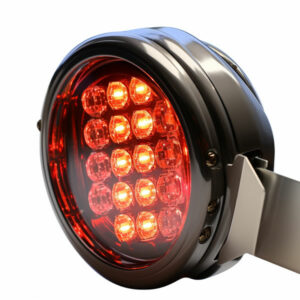Retrofits, New Turn/Tail/Marker Lights
Retrofits, New Turn/Tail/Marker Lights

Retrofits in the automotive industry refer to the process of upgrading or modifying existing vehicles with new or improved components, features, or technologies to enhance performance, safety, comfort, and aesthetics. Retrofits can be carried out on both older and newer vehicles to meet specific needs or preferences. Here are some common retrofit categories in automotive applications:
Performance Enhancements:
Retrofitting performance components, such as turbochargers, exhaust systems, suspension upgrades, and brake systems, can improve a vehicle’s speed, handling, and overall driving experience.
Safety Upgrades:
Installing advanced safety features like adaptive cruise control, lane-keeping assist, blind-spot monitoring, or backup cameras can enhance a vehicle’s safety capabilities.
Infotainment and Connectivity:
Retrofitting infotainment systems with touchscreen displays, navigation, smartphone integration, and advanced audio systems can bring older vehicles up to date with modern technology.
Lighting and Visibility:
Upgrading lighting systems with LED headlights, fog lights, or additional auxiliary lights can improve visibility during nighttime driving and adverse weather conditions.
Interior Comfort and Luxury:
Retrofitting interiors with features like heated seats, leather upholstery, power-adjustable seats, and advanced climate control systems can increase comfort and luxury.
Fuel Efficiency:
Retrofitting hybrid or electric powertrains to traditional gasoline-powered vehicles can improve fuel efficiency and reduce emissions.
Aesthetics and Customization:
Enhancing the vehicle’s appearance through retrofits, such as body kits, custom paint jobs, alloy wheels, and cosmetic modifications, allows for personalization and style customization.
Suspension and Handling:
Upgrading suspension components, such as shocks, struts, and sway bars, can enhance a vehicle’s handling characteristics, including ride quality and stability.
Towing and Hauling:
Retrofitting vehicles for towing and hauling purposes often involves adding trailer hitches, specialized suspension components, and auxiliary braking systems.
Off-Road Capabilities:
Retrofitting off-road vehicles with features like lift kits, skid plates, off-road tires, and winches can improve their off-road performance.
Emissions and Environmental Compliance:
Retrofitting vehicles with emission control systems, such as diesel particulate filters, can help older vehicles meet modern environmental standards.
Soundproofing and Noise Reduction:
Enhancing the cabin with additional insulation and soundproofing materials can reduce road noise and improve in-cabin comfort.
Classic Car Restoration:
Restoring and retrofitting classic cars with modern components, safety features, and technology while preserving their original aesthetics is a popular practice among automotive enthusiasts.
Alternative Fuel Conversions:
Converting vehicles to run on alternative fuels, such as compressed natural gas (CNG) or propane, is a retrofit option for reducing environmental impact.
Retrofits allow vehicle owners to update their vehicles to current standards or personalize them according to their specific needs and preferences. However, it’s important to ensure that retrofits comply with local regulations and safety standards, and they are often performed by professional technicians or specialized retrofitting shops to ensure proper installation and functionality.